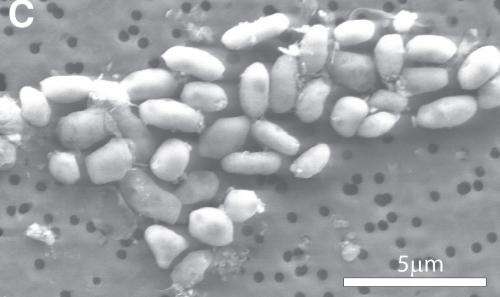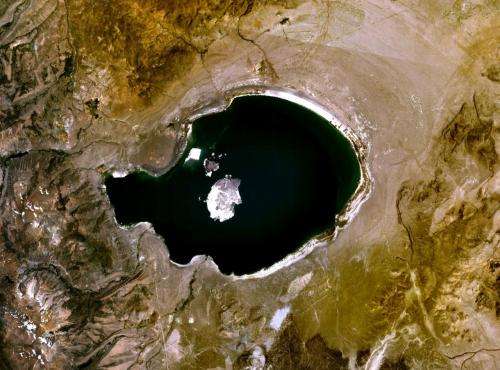Looks like we’re still looking for earthly life forms on other planets

In late 2010, NASA set the Internet buzzing when it called a press conference to discuss an astrobiological finding that would impact the search for extraterrestrial life. Many speculated that some primitive life had been found on Mars or one of Saturn’s moons. But the evidence was found on Earth; a strain of bacteria in California’s Lake Mono that had arsenic in its genetic structure. The discovery implied that life could thrive without the elements NASA typically looks for, mainly carbon and phosphorous. But now, a new study challenges the existence of arsenic-based life forms.
The 2010 paper announcing arsenic based life, “Arsenic-eating microbe may redefine chemistry of life,” was written by a team of scientists led by Felisa Wolfe-Simon. The paper appeared in Science and refuted the long-held assumption that all living things need phosphorus to function, as well as other elements including carbon, hydrogen, and oxygen.
The phosphate ion plays several essential roles in cells: it maintains the structure of DNA and RNA, it combines with lipids to make cell membranes, and it transports energy within the cell through the molecule adenosine triphosphate (ATP). Finding a bacteria that uses normally poisonous arsenic in the place of phosphate shook up the guidelines that have structured NASA’s search for life on other worlds.

But microbiologist Rosie Redfield didn’t agree with Wolfe-Simon’s article and published her concerns as technical comments in subsequent issues of Science. Then, she put Wolfe-Simon’s results to the test. She led a team of scientists at the University of British Columbia in Vancouver and tracked her progress online in the name of open science.
Redfield followed Wolfe-Simon’s procedure. She grew GFAJ-1 bacteria, the same strain found in Lake Mono, in a solution of arsenic with a very small amount of phosphorus. She then purified DNA from the cells and sent the material to Princeton University in New Jersey. There, graduate student Marshall Louis Reaves separated the DNA into fractions of varying densities using caesium chloride centrifugation. Caesium chloride, a salt, creates a density gradient when mixed with water and put in a centrifuge. Any DNA in the mixture will settle throughout the gradient depending on its structure. Reaves studied the resulting DNA gradient using a mass spectrometer to identify the different elements at each density. He found no trace of arsenic in the DNA.
Redfield’s results aren’t by themselves conclusive; one experiment isn’t enough to definitively disprove Wolfe-Simon’s arsenic-life paper. Some biochemists are eager to continue the research and want to figure out the lowest possible level of arsenic that Redfield’s method could detect as a way of determining exactly where arsenic from the GFAJ-1 DNA ends up on a caesium chloride gradient.
Wolfe-Simon is also not taking Redfield’s results as conclusive; she is still looking for arsenic in the bacterium. “We are looking for arsenate in the metabolites, as well as the assembled RNA and DNA, and expect others may be doing the same. With all this added effort from the community, we shall certainly know much more by next year.”
Redfield, however, isn’t planning any follow-up experiments to support her initial findings. “What we can say is that there is no arsenic in the DNA at all,” she said. “We’ve done our part. This is a clean demonstration, and I see no point in spending any more time on this.”
It’s unlikely that scientists will conclusively prove or disprove the existence arsenic-based life anytime soon. For the time being, NASA will likely confine its search for extraterrestrial life to phosphorus-dependent forms we know exist.
Source:



















